This report should have least number of impressions put on record. Not because of any lack of progress on my part (far from it) but due to the shift of my activities from research and observation to one of creative work. I am currently engaged in a project of carving a wood sculpture for the church of St. Merry. It is a crèche, but I am doing my take on the subject by combining images of the Sto Niño with modernist and indigenous Filipino sculptural modes of representation.
The first Sunday of the month fell on the 4th of November. Being so, national museums in Paris are free of entrance fees and I spent the day at the Louvre. My initial purpose for the visit is to undertake a survey of the collection and I erroneously assumed I can do this within a day, despite knowing the physical if not mental impossibility of looking at 35,000 artworks at one time. Of the eight hours I spent in the museum, I spent one hour just to fall in line. The queue had snaked all the way across the courtyard of the Louvre into nearby Cour Carre at opening time at 9am. Good thing the line moved faster than I thought it would but the inconvenience of a chilly downpour will make me bring an umbrella next time. I was able to survey collections on all pavilions, mostly on the ground level only and I covered the following: Medieval sculpture and objects, French academic and romantic sculpture, Italian sculpture, Mesopotamian art and objects, Egyptian art and objects, Greek sculpture, Etruscan and Roman sculpture, Italian paintings from the Trecento to early Baroque and indigenous art from Asia, Africa, America and Oceania. I decided, after experiencing what can be called visual indigestion, to make two or three more trips because what I have done was simply absurd.
Some remarks:
The desire to see Mona Lisa is grossly overrated and the throngs of people taking a photo of this small work can be disconcerting. People seem not to care that a titanic Veronese is in front of it and more visually stunning. And the three other Leonardos in the hall, especially the Madonna of the Rocks, is much more interesting to look for its composition and range of technique. Up close the sfumato technique of Leonardo is definitely derivative of sculptural forms bathed in soft, twilight or pre-dawn illumination. The forms are crisp but the tones show soft modulations suggesting a kind of softness: like a cushy take on a languid Botticelli. With the exception of Giotto and Fra Angelico, the "religious subject" in the Italian paintings of Leonardo and others look like an excuse to do anatomical and perspectival expositions.
The Italian sculpture area seem to be under-presented that their painting counterparts. Michelangelo's Slaves for instance has an eerie lack of spectators and one wonders if its placement directly in front of an exit could make people desire to ambulate past it. Antonio Canova's Cupid and Psyche is placed in a corner besides a doorway.
The Greek section focused only on Classical and Hellenistic sculpture. I was expecting more pieces from the Cycladian and Archaic periods...but that would be demanding I guess. The Mesopotamian, Assyrian and Babylonian works and the recreations of temple walls were impressive. The quietest area of the collection would be that of the Medieval sculptures, so I took the time to make drawings there. I am not alone in the Louvre making sketches, though.
Taking a break from the overwhelming experience of art, I spent the following two days on a literary personage, Jean-Paul Sartre. And with the guidance and company of Christiane Sillau, I was able to discover by walking from Montparnasse to the Pantheon and to St. Germain de Prés, the incredibly small world of the philosopher whose work, Being and Nothingness, provided me an early fascination with phenomenology which persists to this day. I have been reading material on Sartre since my first week here and even bought two books about him (the other books I purchased were by St. Exupery) at the Shakespeare and Company.
I started midweek up till today in looking for and purchasing tools and materials for wood carving. Last week I agreed to undertake a small project of making a nativity scene for the Christmas program of Saint Merry church where Marguerite works as an overall coordinator for exhibitions and programs. I like St Merry as it seemed to be the only church with that sort exhibitions program, as others already are used as concert venues, mostly of classical music. As if it was being possessed by nearby quirky Centre Pompidou and the fountain of Jean Tinguely and Nikki Sainte-Phalle, this under-renovation, scaffold and net encased eglise is the site of installations and experimental music. The contemporary housed in a Medieval church - the image echoed so much affinity with what I intend to present with my antique-style sculptures!
My work commenced yesterday in a studio in the cellars of the church. I have met with the other artists of St Merry and they are as ragtag as the building and the installations here, to I also found them the most engaging local artists I have been acquainted so far. They gave me a set of keys so I can access the workspace at any time I want and even explore the church if I am given to that. (Perhaps I will!)
I would like to stress here the importance of a undertaking a creative project in a residency (bearing in mind future recipients of the PARP grant). Materials are available in many art supply stores, so that is out of the question. I discovered that to make a series if not a single moderately-scaled work after several weeks of information uploading from visits to churches, historical sites and museums is vital in the subsequent integration of the experience to that of one's mode of creative practice. Without this active component, the whole experience of Paris can be overwhelming and often discouraging - especially when you discover that your work is not unique - and believe me you WILL find semblances to your work! I found a French sculptor, Yves Bosquet, who works with carved wood and presents them as antiques the same way I do. But rather than be discouraged I tried to observe what techniques he used, so as his works will provide enrichment to mine. I am quite thankful I saw his works, because it made me feel I have some company in this obsession with wood as material. (Upon seeing Egyptian sculptures in wood at are 3,000 years old also inspired me that the material CAN survive millennia!)
So to conclude: artmaking helps. And if you need references - they are all over the city. In my case I simply walk to Hotel de Ville, the Paris City Hall and look at the sculptures of children that decorate the posts of the gate and come back with the information to the studio. Believe me when I declare that Paris seemed to be made for, and by, artists.
The first Sunday of the month fell on the 4th of November. Being so, national museums in Paris are free of entrance fees and I spent the day at the Louvre. My initial purpose for the visit is to undertake a survey of the collection and I erroneously assumed I can do this within a day, despite knowing the physical if not mental impossibility of looking at 35,000 artworks at one time. Of the eight hours I spent in the museum, I spent one hour just to fall in line. The queue had snaked all the way across the courtyard of the Louvre into nearby Cour Carre at opening time at 9am. Good thing the line moved faster than I thought it would but the inconvenience of a chilly downpour will make me bring an umbrella next time. I was able to survey collections on all pavilions, mostly on the ground level only and I covered the following: Medieval sculpture and objects, French academic and romantic sculpture, Italian sculpture, Mesopotamian art and objects, Egyptian art and objects, Greek sculpture, Etruscan and Roman sculpture, Italian paintings from the Trecento to early Baroque and indigenous art from Asia, Africa, America and Oceania. I decided, after experiencing what can be called visual indigestion, to make two or three more trips because what I have done was simply absurd.
Some remarks:
The desire to see Mona Lisa is grossly overrated and the throngs of people taking a photo of this small work can be disconcerting. People seem not to care that a titanic Veronese is in front of it and more visually stunning. And the three other Leonardos in the hall, especially the Madonna of the Rocks, is much more interesting to look for its composition and range of technique. Up close the sfumato technique of Leonardo is definitely derivative of sculptural forms bathed in soft, twilight or pre-dawn illumination. The forms are crisp but the tones show soft modulations suggesting a kind of softness: like a cushy take on a languid Botticelli. With the exception of Giotto and Fra Angelico, the "religious subject" in the Italian paintings of Leonardo and others look like an excuse to do anatomical and perspectival expositions.
The Italian sculpture area seem to be under-presented that their painting counterparts. Michelangelo's Slaves for instance has an eerie lack of spectators and one wonders if its placement directly in front of an exit could make people desire to ambulate past it. Antonio Canova's Cupid and Psyche is placed in a corner besides a doorway.
The Greek section focused only on Classical and Hellenistic sculpture. I was expecting more pieces from the Cycladian and Archaic periods...but that would be demanding I guess. The Mesopotamian, Assyrian and Babylonian works and the recreations of temple walls were impressive. The quietest area of the collection would be that of the Medieval sculptures, so I took the time to make drawings there. I am not alone in the Louvre making sketches, though.
Taking a break from the overwhelming experience of art, I spent the following two days on a literary personage, Jean-Paul Sartre. And with the guidance and company of Christiane Sillau, I was able to discover by walking from Montparnasse to the Pantheon and to St. Germain de Prés, the incredibly small world of the philosopher whose work, Being and Nothingness, provided me an early fascination with phenomenology which persists to this day. I have been reading material on Sartre since my first week here and even bought two books about him (the other books I purchased were by St. Exupery) at the Shakespeare and Company.
I started midweek up till today in looking for and purchasing tools and materials for wood carving. Last week I agreed to undertake a small project of making a nativity scene for the Christmas program of Saint Merry church where Marguerite works as an overall coordinator for exhibitions and programs. I like St Merry as it seemed to be the only church with that sort exhibitions program, as others already are used as concert venues, mostly of classical music. As if it was being possessed by nearby quirky Centre Pompidou and the fountain of Jean Tinguely and Nikki Sainte-Phalle, this under-renovation, scaffold and net encased eglise is the site of installations and experimental music. The contemporary housed in a Medieval church - the image echoed so much affinity with what I intend to present with my antique-style sculptures!
My work commenced yesterday in a studio in the cellars of the church. I have met with the other artists of St Merry and they are as ragtag as the building and the installations here, to I also found them the most engaging local artists I have been acquainted so far. They gave me a set of keys so I can access the workspace at any time I want and even explore the church if I am given to that. (Perhaps I will!)
I would like to stress here the importance of a undertaking a creative project in a residency (bearing in mind future recipients of the PARP grant). Materials are available in many art supply stores, so that is out of the question. I discovered that to make a series if not a single moderately-scaled work after several weeks of information uploading from visits to churches, historical sites and museums is vital in the subsequent integration of the experience to that of one's mode of creative practice. Without this active component, the whole experience of Paris can be overwhelming and often discouraging - especially when you discover that your work is not unique - and believe me you WILL find semblances to your work! I found a French sculptor, Yves Bosquet, who works with carved wood and presents them as antiques the same way I do. But rather than be discouraged I tried to observe what techniques he used, so as his works will provide enrichment to mine. I am quite thankful I saw his works, because it made me feel I have some company in this obsession with wood as material. (Upon seeing Egyptian sculptures in wood at are 3,000 years old also inspired me that the material CAN survive millennia!)
So to conclude: artmaking helps. And if you need references - they are all over the city. In my case I simply walk to Hotel de Ville, the Paris City Hall and look at the sculptures of children that decorate the posts of the gate and come back with the information to the studio. Believe me when I declare that Paris seemed to be made for, and by, artists.
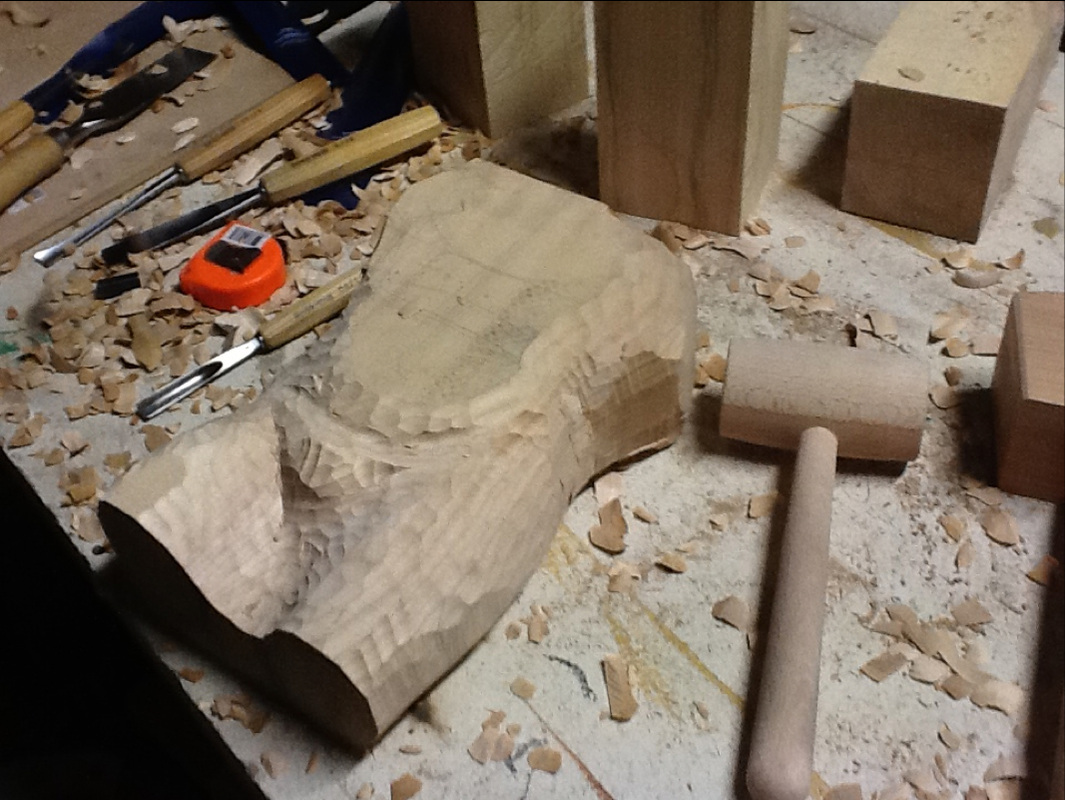
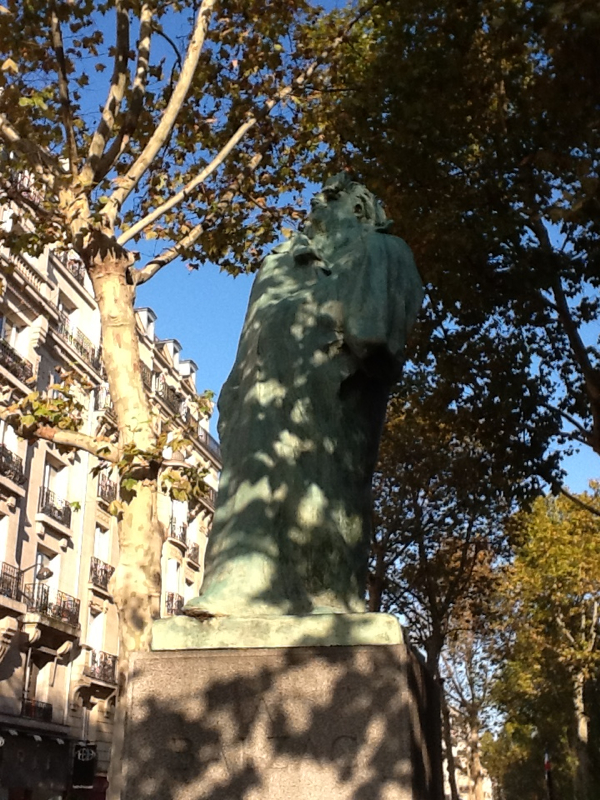
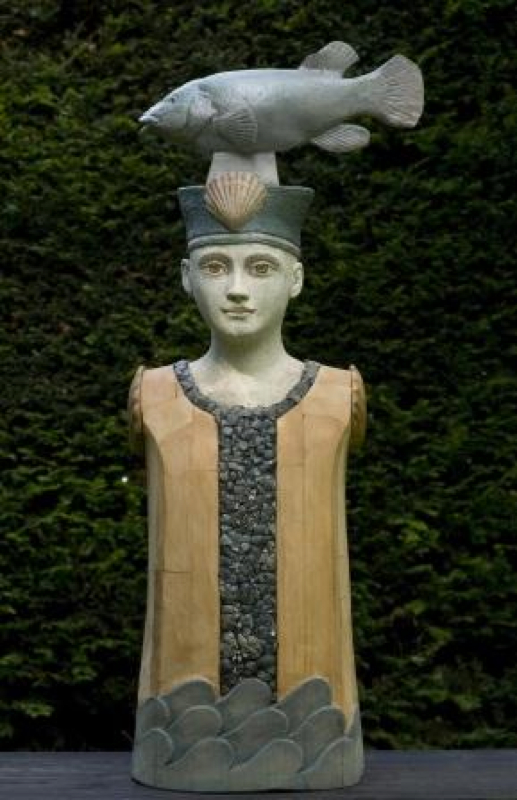
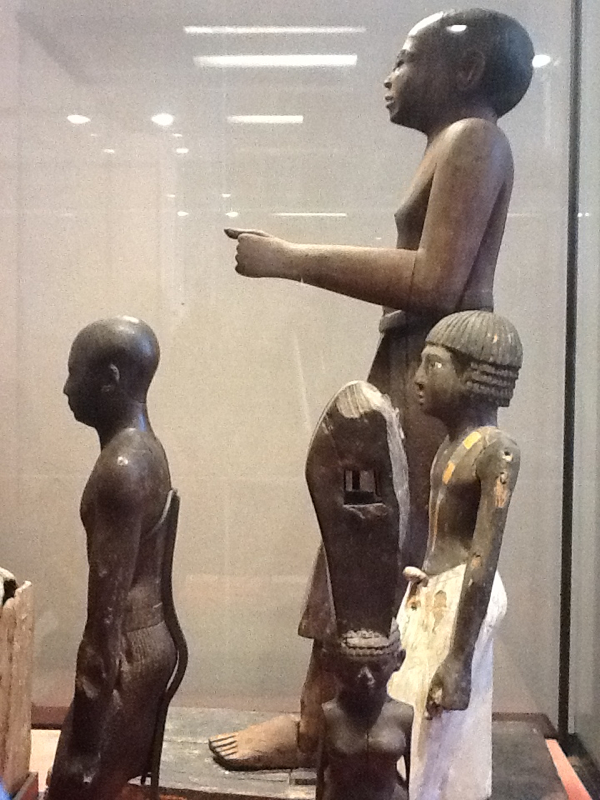
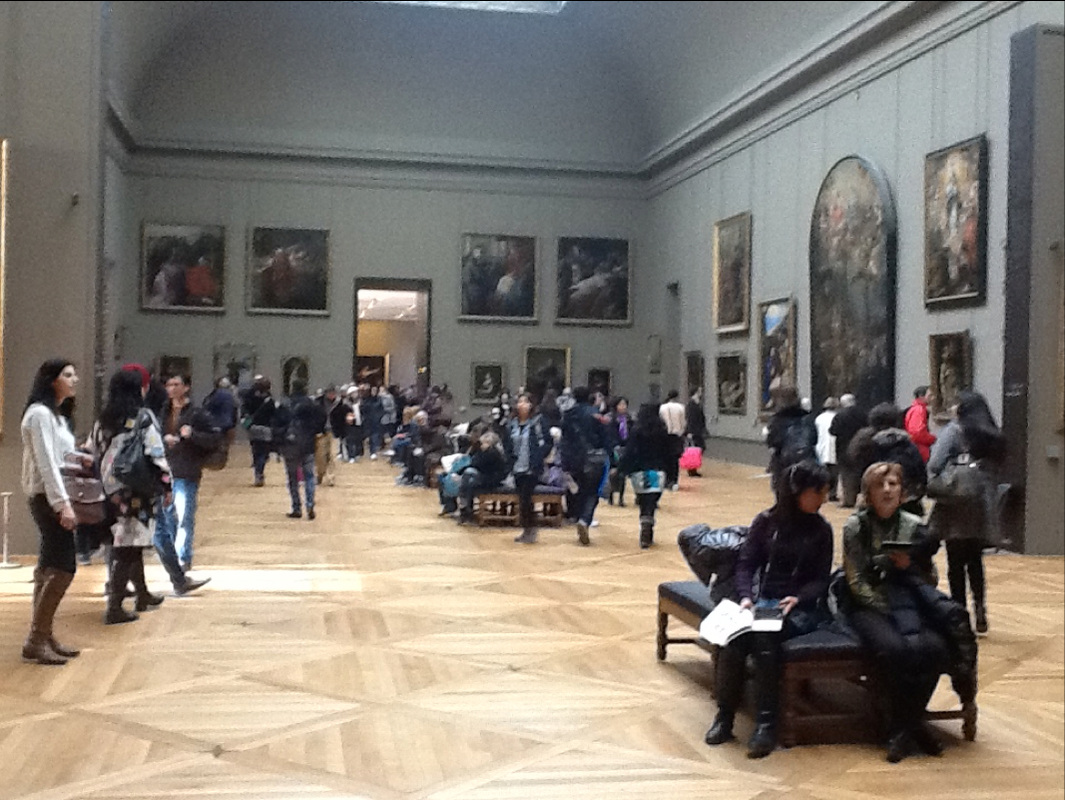
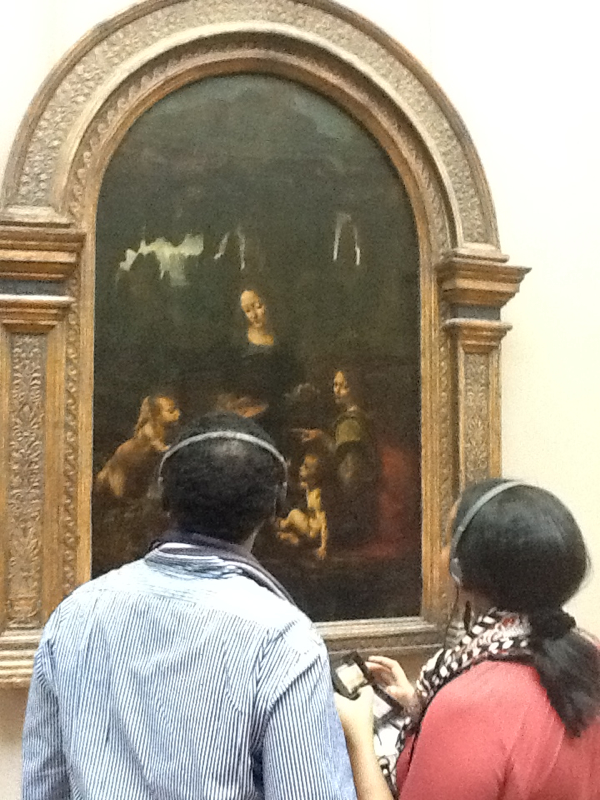
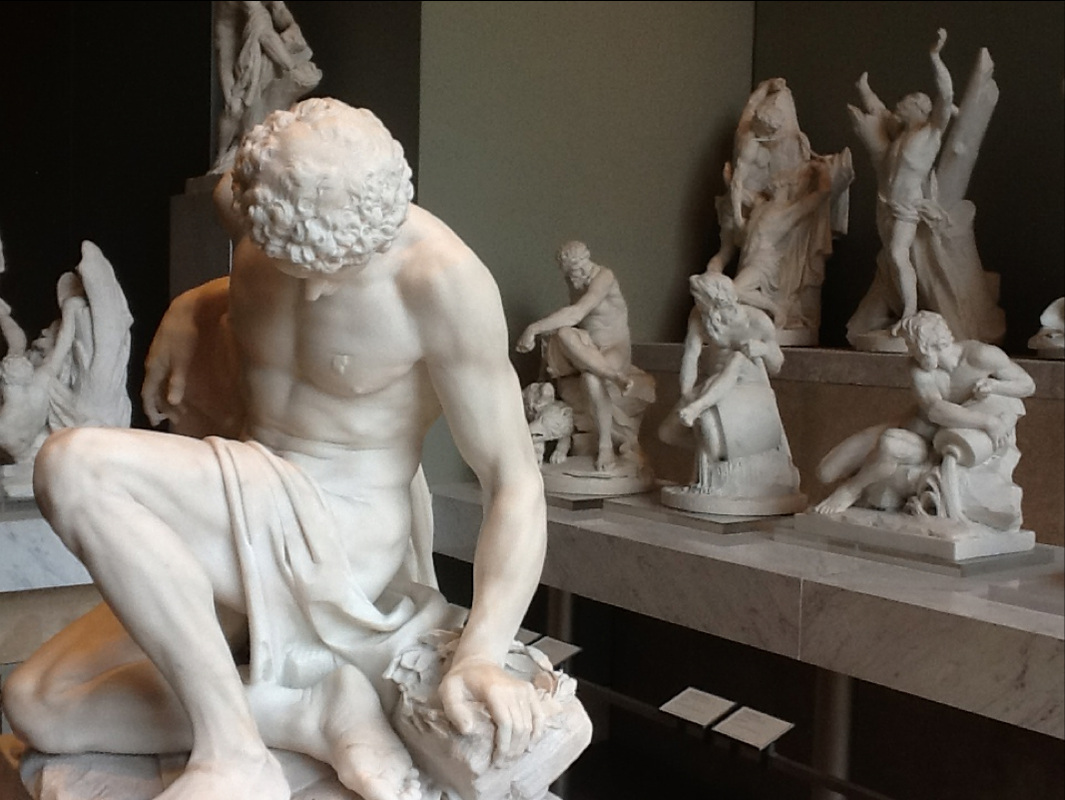
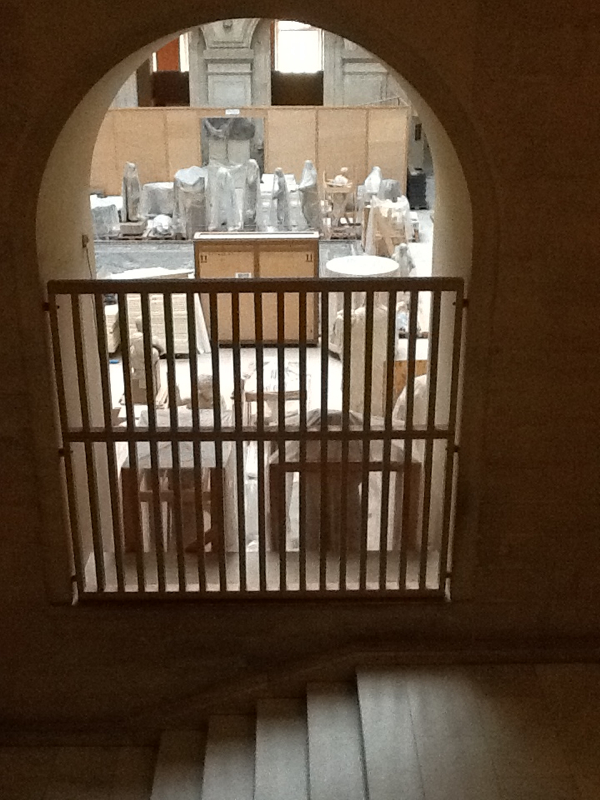
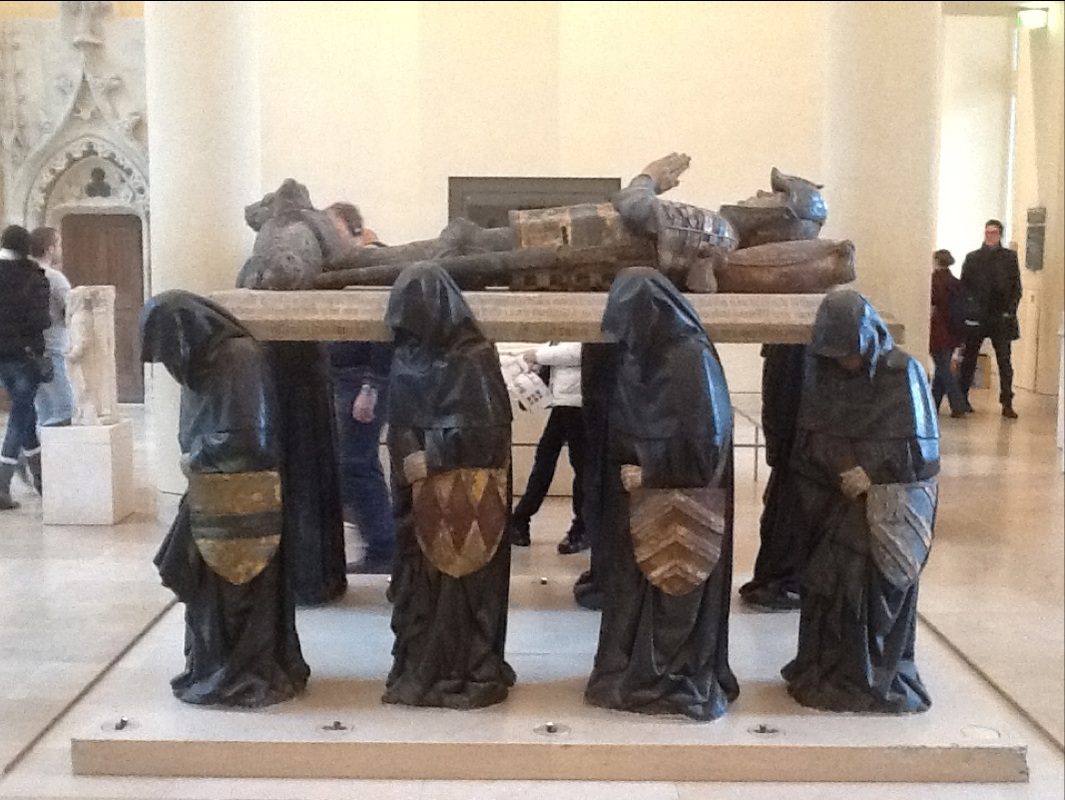
 RSS Feed
RSS Feed